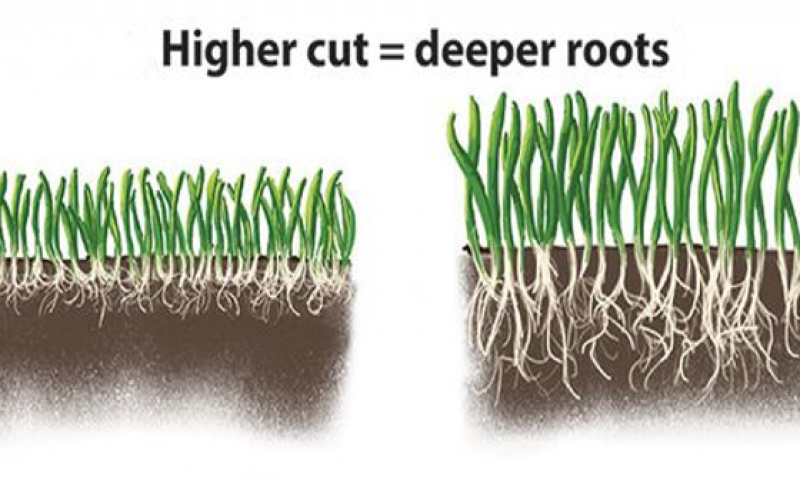
Lawn Care and Stormwater Runoff
Stormwater runoff (rain and snowmelt) flows from commercial, private, and municipal lawns into our storm drains, our streams, and our lakes. This runoff often contains chemicals and nutrients that pollute our waters, causing public health problems such as cyanobacteria (algal) blooms and E. coli contamination. How we manage our lawns can help reduce the amount of stormwater runoff reaching our waters.
Learn about environmentally friendly ways to manage homes and properties.
Lake Champlain Sea Grant is part of a collaborative outreach initiative, called Lawn to Lake, that educates property owners about best lawn care practices for protecting our lakes and streams.
Lawn to Lake Campaigns
Raise the Blade
Through the "Raise the Blade" campaign, homeowners, businesses, and municipalities are encouraged to follow three simple lawn care practices that help reduce stormwater runoff:
- Mow grass no shorter than 3 inches.
- Allow grass clippings to decompose in place.
- Cut only about one-third of the height of the grass at each mowing.
What are the benefits of these practices?

Leaving the clippings to decompose in place creates a natural fertilizer and builds soil organic matter. This makes healthy soils which strengthen the lawn's resistance to drought, disease, and pests. Healthy soils also hold more water and act like a sponge, absorbing stormwater runoff and filtering out sediment and pollutants.
Watch these videos to learn more about the benefits of these best practices for both the health of your grass and for water quality:
Lawn to Lake is partnering with several local businesses and municipalities that follow the recommended practices. Many businesses post Raise the Blade signs on their properties, which publicly demonstrates their commitment to reducing stormwater runoff. Several of these businesses also display educational brochures about these best practices for customers who may be interested in learning more or adopting the practices themselves. Still other businesses provide lawn areas for research on the impact of “raising the blade” for stormwater runoff reduction.
Learn more about our Raise the Blade research.
To find out more about the businesses and municipalities that have adopted Raise the Blade practices and how you can help reduce stormwater runoff from your property, visit lawntolake.org.
Don't 'P' on Your Lawn
The “Don’t ‘P’ on Your Lawn” campaign recommends the use of phosphorus-free fertilizer and soil testing before application of fertilizer in order to use the right type and amount. Lawn to Lake has encouraged local retailers to stock phosphorus-free fertilizers and shares other healthy lawn care tips.
Learn more about “Don’t ‘P'on Your Lawn” at lawntolake.org.
You can also find out more from this "Don't 'P' on Your Lawn" fact sheet.
Lawn to Lake Partners
Lake Champlain Sea Grant partners with the Lake Champlain Basin Program, Lake Champlain Committee, Vermont Agency of Natural Resources, Composting Association of Vermont, Smart Waterways Regional Stormwater Education Program, and Cornell Cooperative Extension to implement Lawn to Lake.
Learn more about the Lawn to Lake initiative at lawntolake.org.